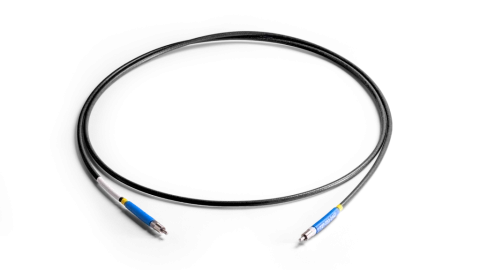Description
Fibers and Probes
Ocean Optics offers the most versatile range of optical fibers in the industry, designed to deliver years of reliable and accurate results. Whether you need a single patch cord, a custom assembly, or an OEM build, Ocean Optics has the expertise to meet your requirements. Our commitment to quality ensures that each fiber assembly is crafted with precision, providing you with the confidence to tackle any application, no matter how complex.
Our comprehensive selection of fiber accessories, fixtures, and assembly kits allows for seamless integration into even the most challenging setups. These tools are designed to help you connect and manipulate fibers with ease, ensuring optimal performance in your specific application. By choosing Ocean Optics, you are investing in a solution that is both flexible and dependable.
Our fibers assemblies can be used with Ocean Optics spectrometers as well as third-party devices.
Anatomy of an Assembly
At the heart of each fiber assembly is a core made of pure silica, with the core diameter being a crucial factor to consider when selecting an optical fiber. This core is surrounded by a doped-fluorine silica cladding, followed by a buffer material that enhances the fiber's strength and minimizes stray light. Typically, polyimide is used as the buffer, though aluminum or acrylate may also be employed in certain assemblies. The entire structure is then protected by a jacketing, which provides strain relief and safeguards the fiber.
For our off-the-shelf Premium-grade "Q" Optical Fiber Assemblies, stainless steel silicone monocoil is the standard jacketing. However, various other jacketing options are available for custom assemblies. Each assembly is terminated with precision SMA 905 connectors, ensuring perfect alignment with the spectrometer's slit for optimal performance. Captive end caps further protect the fiber tips from scratches and contaminants.
Assembly Identifiers
Our optical fiber and probe assemblies are meticulously labeled to provide clear identification. Each assembly features a boot collar color that indicates the fiber type and its most efficient wavelength range. A white product label displays the product name and item code, while a band color signifies the core diameter. These identifiers ensure that you can easily determine the specifications and optimal usage of your fiber assembly.
Ocean Optics Premium-Grade Optical Fiber Assemblies
Specifications
| Core Diameter: | Not Specified |
|---|---|
| Wavelength Range: | 180 – 6000 nm |
| Cable Length: | Not Specified |
| Fiber Core Material: | Silica, Fluoride Glass, Chalcogenide Glass |
| Core Diameter: | 8 - 1000 µm |
| UV-VIS XSR Solarization-resistant: | 180-800 nm |
| UV/SR-VIS High OH Content: | 200-1100 nm |
| UV-VIS High OH Content: | 300-1100 nm |
| VIS-NIR Low OH Content: | 400-2100 nm |
| Fluoride: | 300-4500 nm |
| Chalcogenide Fiber: | 2000-6000 nm |
Features
- Industry-Leading Flexibility: Ocean Optics offers the most flexible line of optical fibers, providing reliable and accurate results for a wide range of applications.
- Customizable Solutions: From one-off patch cords to OEM builds, our fiber assemblies can be tailored to meet virtually any application requirement.
- Durable Construction: Each fiber assembly features a pure silica core, doped-fluorine silica cladding, and a protective buffer, ensuring strength and reduced stray light.
- Premium Jacketing Options: Standard jacketing includes stainless steel silicone monocoil, with several other options available for custom assemblies.
- Precision Connectors: SMA 905 connectors are precisely aligned to the spectrometer’s slit for optimal performance.
- Protective End Caps: Captive end caps safeguard fiber tips against scratches and contaminants.
- Clear Identification: Assemblies are labeled with a white product label, boot collar color, and band color for easy identification of fiber type, core diameter, and efficient wavelength range.
- Technical Tip: Handle fibers with care, avoiding tight bends or winding, and store in a cool, dry place to maintain performance.
- Color-Coded System: Boot and band colors indicate the fiber type and most efficient wavelength range, ensuring you always know the specifications of your assembly.
- Wide Wavelength Range: Our premium-grade optical fiber assemblies cover a broad spectrum, from UV to NIR, with specialized options for solarization resistance and high OH content.
Applications
- Spectrometry
- Laser optics
- Spectroscopy
- Biomedical imaging
- Metrology and inspection
Frequently Asked Questions
What materials are used in the construction of Ocean Optics optical fibers?
How should Ocean Optics optical fibers be handled and stored?
What is the significance of the boot collar color on Ocean Optics fiber assemblies?
What does the band color on an Ocean Optics fiber assembly indicate?
What are the standard jacketing and connectors used in Ocean Optics Premium-grade 'Q' Optical Fiber Assemblies?
How are Ocean Optics optical fiber assemblies labeled?
What are the most efficient wavelength ranges for different fiber types in Ocean Optics assemblies?
Similar Products
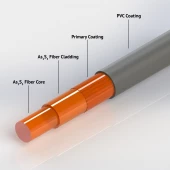
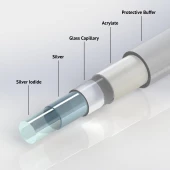

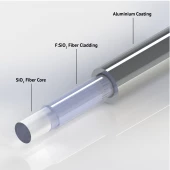
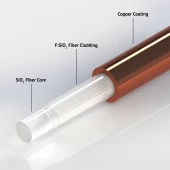

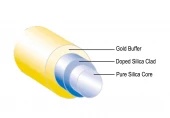
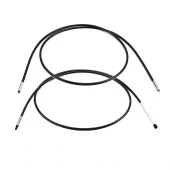
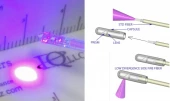
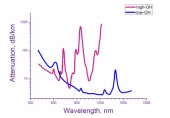


Your inquiry has been received.
Create an account by adding a password
Why create an account?
- Auto-complete inquiry forms
- View and manage all your past messages
- Save products to your favorites
- Close your account anytime — no hassle
